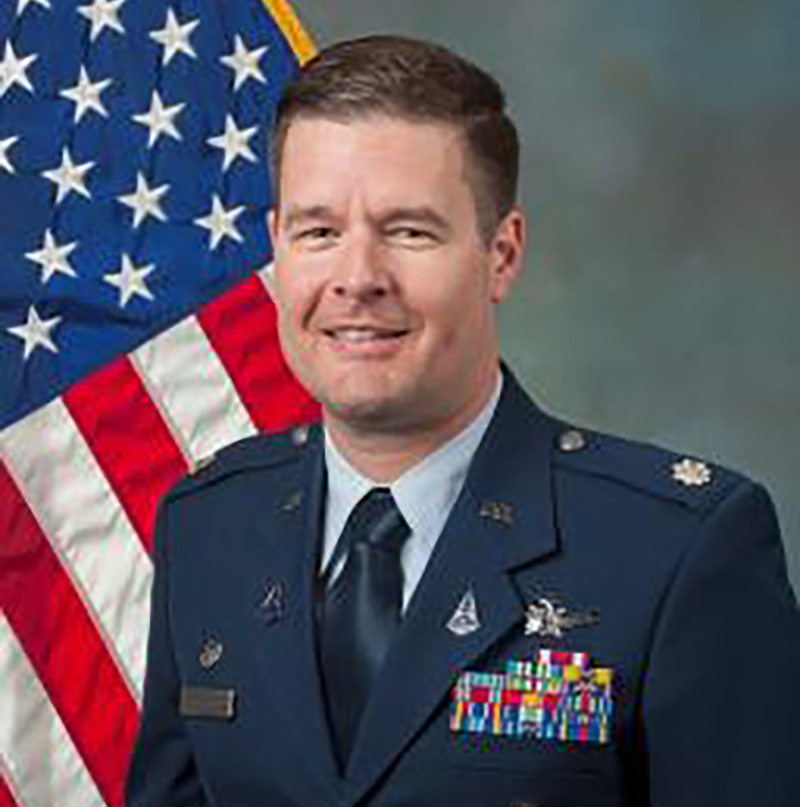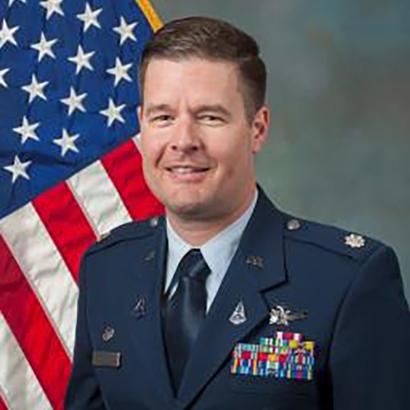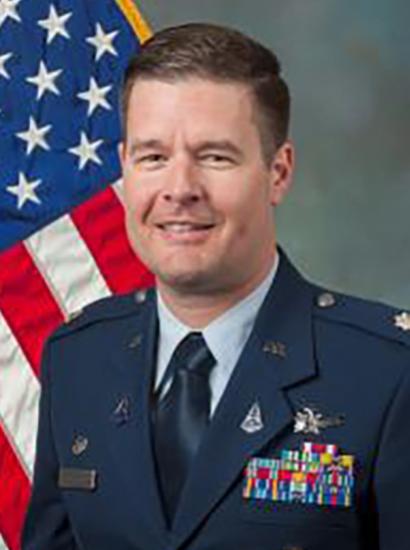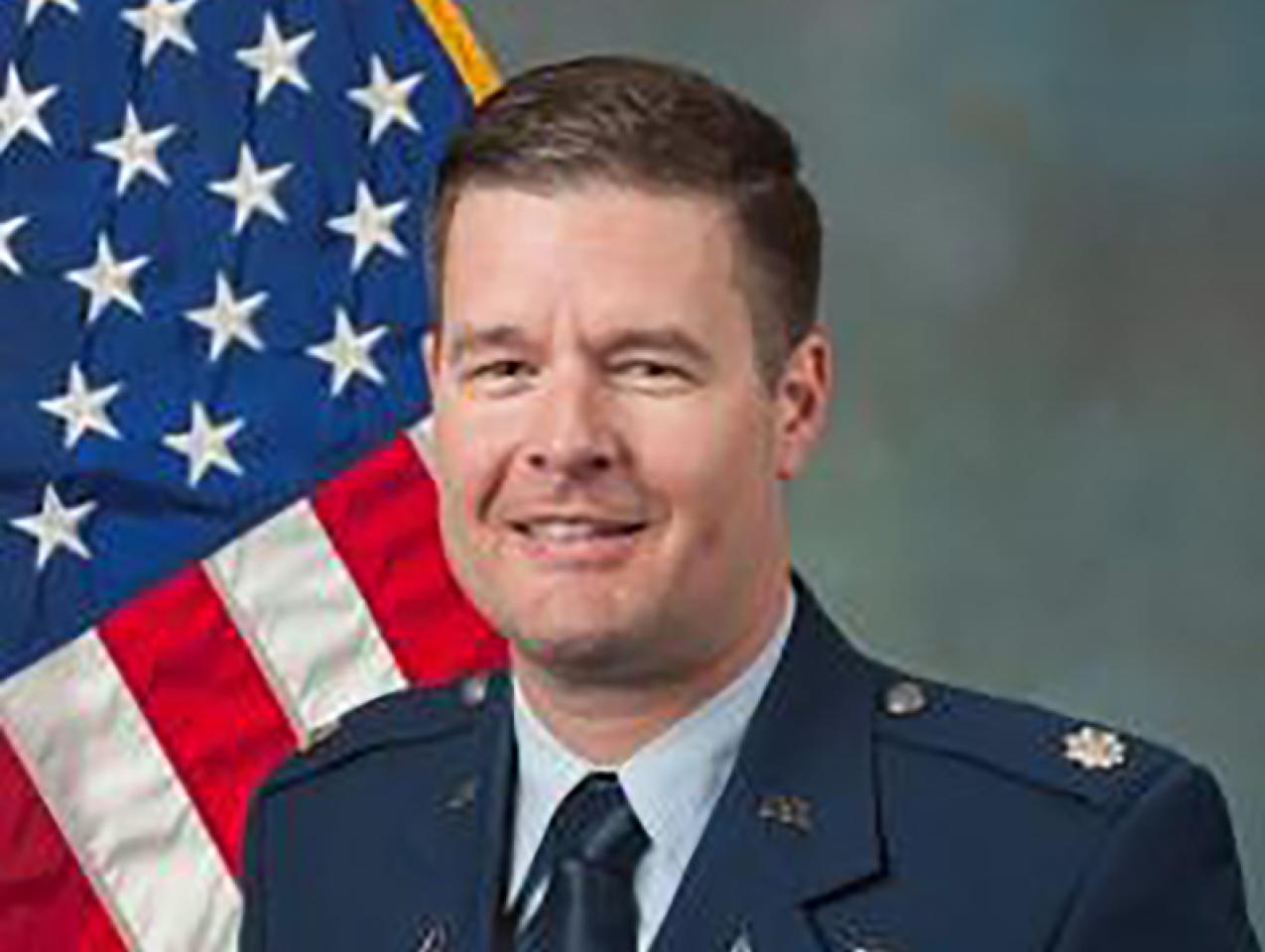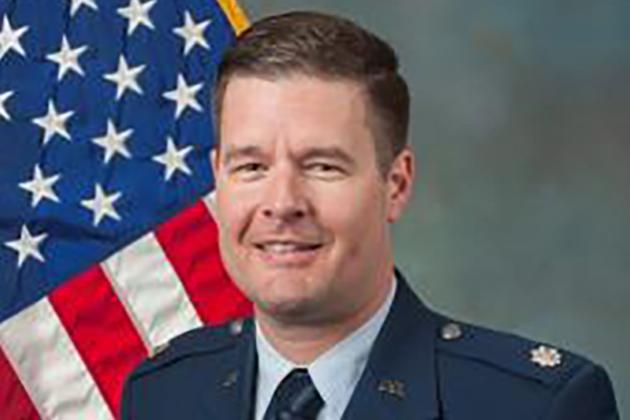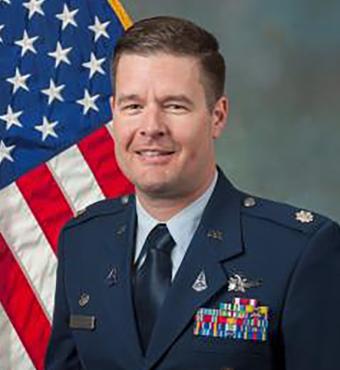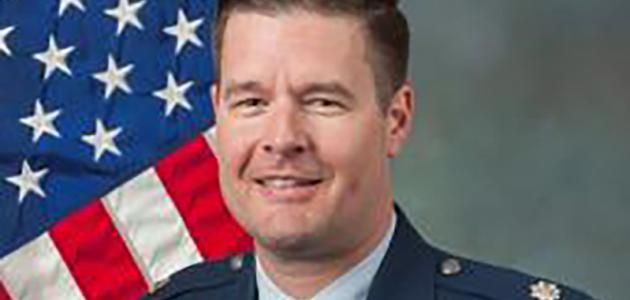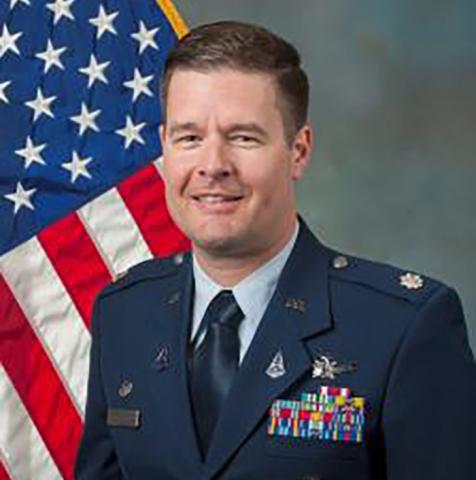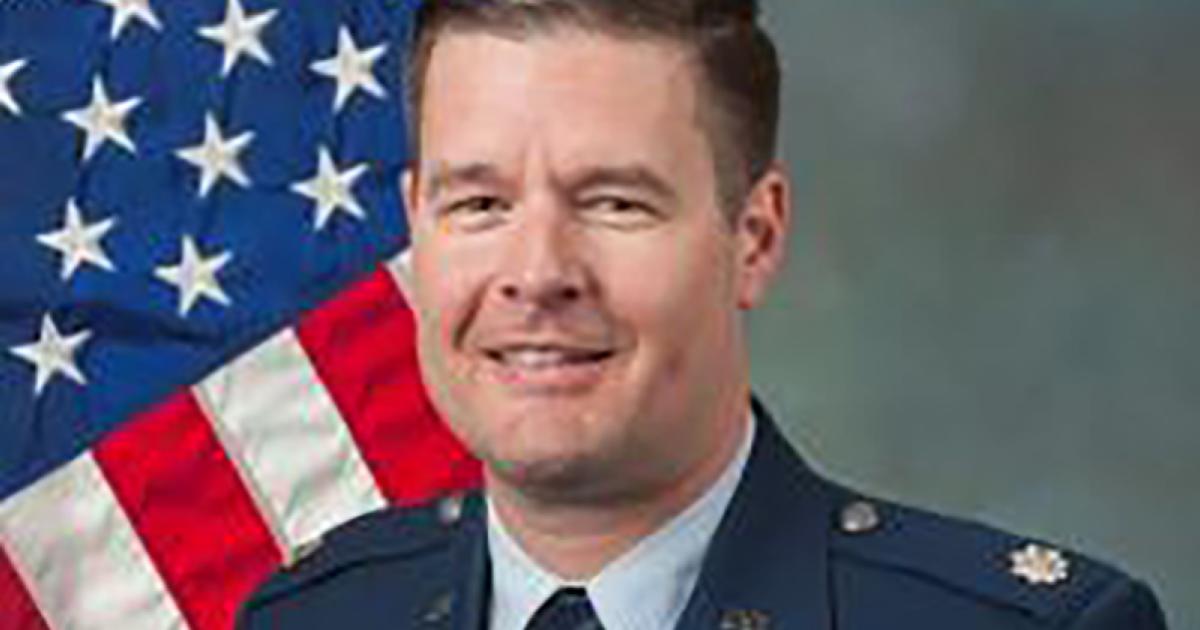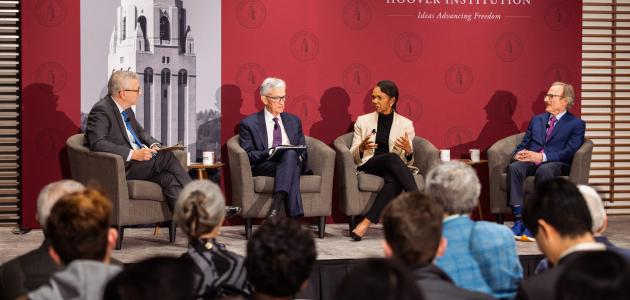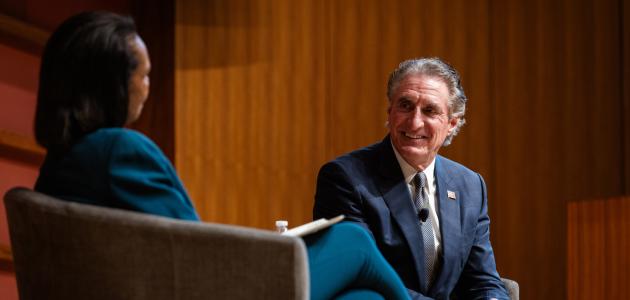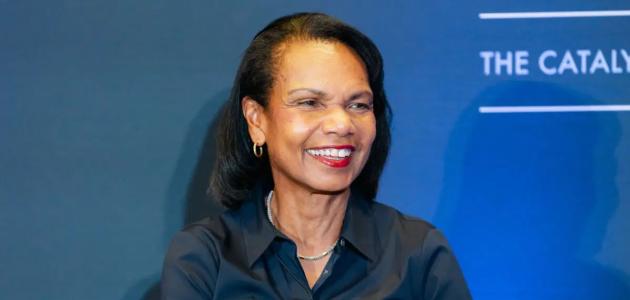Lieutenant Colonel Mathew Beck, of US Space Force, is a National Security Affairs Fellow for the academic year 2022–23 at the Hoover Institution.
In this interview, Lt. Col. Beck describes his career beginning in the US Air Force, and now in the newly established US Space Force. While in the air force, he first served as a nuclear command and control officer and went on to serve as a space systems operator in a variety of units before transferring to the US Space Force in 2020.
Upon transferring to the US Space Force, Lt. Col. Beck continued to perform space operations where he was responsible for overseeing command, control, and operations for Department of Defense (DoD) satellites. Lt. Col. Beck explains that the exponential increase in the number of nation-state and commercial satellites over the last several years has dramatically complicated operations in the space domain.
During his fellowship year at Hoover, Lt. Col. Beck explored how the US Space Force can optimize its organizational performance. Additionally, he’s interested in developing a deeper understanding on the development of policy and its broad impacts on both the commercial and government sectors.
Why did you decide to join the US Air Force?
In many ways, my decision to join the US Air Force was influenced by my grandfathers, both of whom served in World War II. I grew up in Dayton, Ohio, near the United States Air Force Museum. My grandfathers took me to the museum on multiple occasions to see the planes of which they had been crewmembers during the war. My experiences with them excited me about not just aviation but also military service at large.
Additionally, I was fortunate to have some friends of our family who were affiliated with Wright-Patterson Air Force Base (AFB), just east of Dayton. They were a strong influence and urged me to explore pursuing a career in the air force. In high school, I had the opportunity to do an internship at the Air Force Research Laboratory on Wright-Patterson AFB and later, during college, I participated in the Air Force Reserve Officer Training Corps (ROTC), which grew my experience with the military and put me on the path to join the service.
Were you interested in space back then?
When I was young, I had a general curiosity about space, primarily from witnessing shuttle launches and visiting the Kennedy Space Center, but while going through ROTC in college, I was solely focused on becoming a pilot in the air force. However, there were different plans for me, and after being selected to attend pilot training, I was medically transitioned to the space and missile career field. As the name suggests, this career field has both a space track and a missile track. As a new officer arriving at my initial training, I was tracked to spend my first assignment as a nuclear missile launch officer. Near the completion of this assignment, I was offered an opportunity to transition to space operations, and I was thrilled for the chance to be involved in an area I had always found interesting.
What does nuclear operations entail, and how was that different from your first space job?
Air force nuclear missile operations are located across the northern continental United States. Seven days a week, twenty-four hours a day, operators sit about a hundred feet underground in protected and sealed enclosures. They maintain constant watch and provide security for these systems. If necessary, these officers are prepared to elevate to higher states of readiness, including the launch of nuclear weapons. When I was performing these operations, teams of two launch officers changed out every twenty-four hours.
After four years of performing the nuclear command and control mission, I went to Schriever AFB (now renamed Schriever Space Force Base) in Colorado Springs, where I operated a system called Space Based Space Surveillance. This system tracks and catalogs space objects, including debris, and provides that information, as a dedicated sensor in our Space Surveillance Network, to build our space domain awareness. At the time, it was operated by a five-person crew of contractors and military personnel that took care of the system requirements, mission planning, and data download 24/7.
What does the competitive landscape currently look like in space?
It’s an interesting question, because looking back just ten years, you could identify most of the players in the space domain. While a burgeoning set of commercial capabilities existed, the environment primarily comprised major state actors like Russia, China, and the United States.
Fast-forward to today and the commercial subset has grown exponentially, heavily influencing the ability for many countries to take a more participatory role. There are companies, like SpaceX, building what is called a proliferated LEO [low-Earth orbit] architecture. This means they are constructing constellations made up of hundreds or thousands of satellites that are in orbit close to the earth. An architecture like this can support expanded worldwide broadband internet, cell phone use, and other telecommunications. This creates a very hard problem set because as the number of players and systems increases, the domain becomes more congested. This complicates the day-to-day tasks of tracking space objects, performing collision avoidance, accomplishing health and safety operations, and maintaining mission requirements.
How have you been a part of the space force stand-up team, and when did you transition over?
In 2018 I was working in the US Air Force Space Command headquarters. I was fortunate to be part of the space force stand-up team, which oversaw the consolidation of US military space operations across the armed forces into its own unique branch. There was a small group of us that helped organizationally design what this new service would look like. We evaluated and assigned designated roles and functions of units within the service and created organization transition plans in order to move the missions and personnel into the US Space Force.
The first effort of the stand-up was to officially establish the organization and then transfer personnel into the service. This started with our service chief—the chief of space operations (CSO)—and our senior enlisted leader, the chief master sergeant of the space force. Over the next several years, the majority of individuals across the armed forces who were involved in space operations have been brought into the space force. As for myself, two years after working the initial stand-up, I transferred over in 2020.
Do you see a convergence between the missions of space force and NASA?
I do. I think eventually there will need to be some analysis of the space force’s and NASA’s respective functions and interests, particularly in the areas of exploration and the commercial economy. I think these questions and roles will become more of a focus point when we begin exploring the use of moon resources and transiting cislunar space, the area between geosynchronous orbit and the moon.
In the past, space has been largely civilian focused. Today, however, much like the domains of sea and cyberspace, we need to apply DoD manpower and resources to protect and defend our national interests as space becomes an even more critical part of our economy and way of life. To that end, I believe there will be closer coordination between the space force and NASA in the future.
Tell us about your educational background.
I attended the University of Dayton on an ROTC scholarship and graduated with a degree in operations management. While I was stationed as a missile officer, I had the opportunity to earn a master’s degree in organizational leadership from Gonzaga University. I have also had several different formative professional development experiences throughout my career in the military.
At the rank of captain in 2012, I was selected to attend the Air Force Weapons School’s Space Superiority Weapons instructor course. Weapons School is a six-month course focused on learning operational employment and integration of capabilities into combat operations. I was later selected to return to the Weapons School and served another three years as an instructor. From the standpoint of both student and instructor, the Weapons School demands detailed domain knowledge, expert instructor abilities, and refined leadership skills. I was blessed to have the opportunity of spending several years with fellow instructors and students who emulate and live these qualities every day, embodying the motto: Humble, Approachable, Credible. My time at the Weapons School has had a significant impact on shaping me as a space professional and military officer.
I was also fortunate enough to be selected to attend Air Command and Staff College in Montgomery, Alabama, as a member of the first Schriever Space Scholars class. We spent the year focused on space power, space history, commercial advancements, and a forward-looking strategy for the space force. Through that program, I received a master’s degree in military operational art and strategy.
In addition to these experiences, I was also afforded the opportunity to earn an additional master’s degree through the Air Force Institute of Technology in systems engineering.
How did you spend your fellowship year at Hoover?
It has been an outstanding opportunity to be on the Stanford University campus. Here, we are closely connected to Silicon Valley, and on the cutting edge of technology, research, and development.
I have engaged with several scholars at Hoover and Stanford at large for their perspectives on optimizing the space force’s organizational performance and innovation, as well as how other organizations evaluate problems, balance risk, and assess effectiveness.
I have leveraged my proximity to senior fellows here at Hoover to better understand how policy considerations are addressed and debated among academia and government. One example of this is how the US Space Force and US Space Command (USSPACECOM) better shape the identification and development of norms and behaviors in space. As previously mentioned, the space domain is busier and more congested than ever before. In the past few years, we’ve also seen the testing and development of debris-generating antisatellite systems by multiple countries. These two changes have demanded a focus on the development of international rules and norms, much like we have in the maritime domain. Discussing how to expand on initiatives like the USSPACECOM tenets and behaviors and the US Space Force’s theory of victory is of particular interest.
Can you talk about your work with the Stanford undergraduate mentees?
The Public Policy 100 course is an awesome program, which has been a great experience for me. The National Security Affairs Fellows are matched with three students, to whom we provide our perspectives based on our work in the national security arena. Additionally, we lead classes on topics like leadership and give them insight into life in the military and our career experiences. We also get a chance to interact with former senior government officials and learn alongside these phenomenally talented students as we discuss issues like the national security strategy. This program is an excellent opportunity to grow and develop knowledge on government and military service, while having an impact on students who will undoubtedly be future senior leaders of our nation.
What does leadership mean to you?
Leadership rests on two pillars. First, the core of leadership is motivating people to do things they wouldn’t normally do. Inspiring motivation in a unit is an intangible effect that must be derived from the example you set and your daily approach. As a leader you must hold mission accomplishment above all else, while also ensuring the members of your unit have the necessary support to be effective in their roles. One of the most important parts of this is ensuring a healthy work-life balance and making sure resources are available for each member’s individual mission, professional development, and family.
I have found myself saying several times, “You can’t be effective at work if you aren’t effective at home.” In the military, families are asked to make incredible sacrifices. These sacrifices can come in the form of a nomadic lifestyle, changing or challenging education decisions, deployments, up-ended schedules, etc. Because of this, a leader has an important responsibility to enable each member to develop a solid foundation at home that can be relied upon when extraordinary situations demand full attention at work. This can take many forms but starts with deliberate engagement by the leader to identify those needs.
The second part of leadership is about providing team members with the tools necessary to be successful. This means you have to be proactive about supporting ongoing efforts, shielding the team from distractions, and energizing the right resources for the mission. In approaching each situation, I try to ask myself these questions: Why are we doing this and is it good for the mission? Does everyone know what we’re doing and how they fit in? What can I do to help? These three questions help me focus on my role as a leader.







